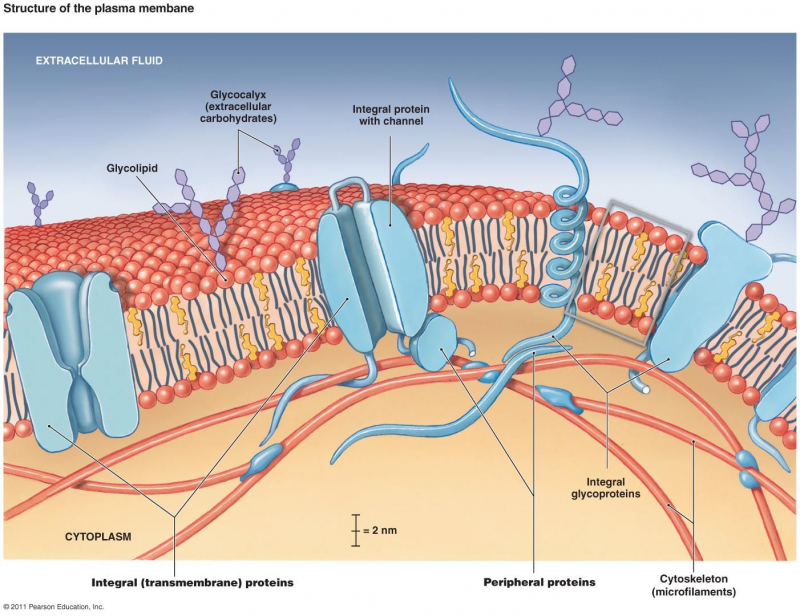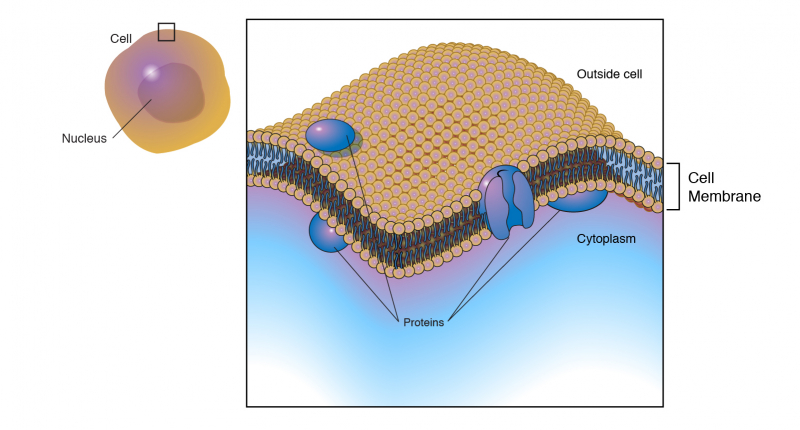The fluid mosaic model also describes how nutrients are transported into and out of the cell.
To transfer molecules across the cell membrane, nutrient and waste transport can be passive (no energy required) or active (energy required). Passive transport can occur via diffusion, in which molecules migrate from a high concentration region to a low concentration region (down a concentration gradient). Osmosis occurs when molecules diffuse across a semipermeable membrane. However, in cells, facilitated diffusion works because of transport proteins, which establish membrane-spanning portals for certain types of molecules and ions or latch to a specific molecule on one side of the membrane, convey it to the other side, and release it.
Active transport, on the other hand, is powered by adenosine triphosphate (ATP), a coenzyme that transports chemical energy collected from food breakdown to other areas of the cell, to move molecules across a concentration gradient. Active transport, for example, permits the cell to evacuate waste ions such as sodium (Na+) even when the concentration of sodium ions outside the cell is larger than the concentration within.







